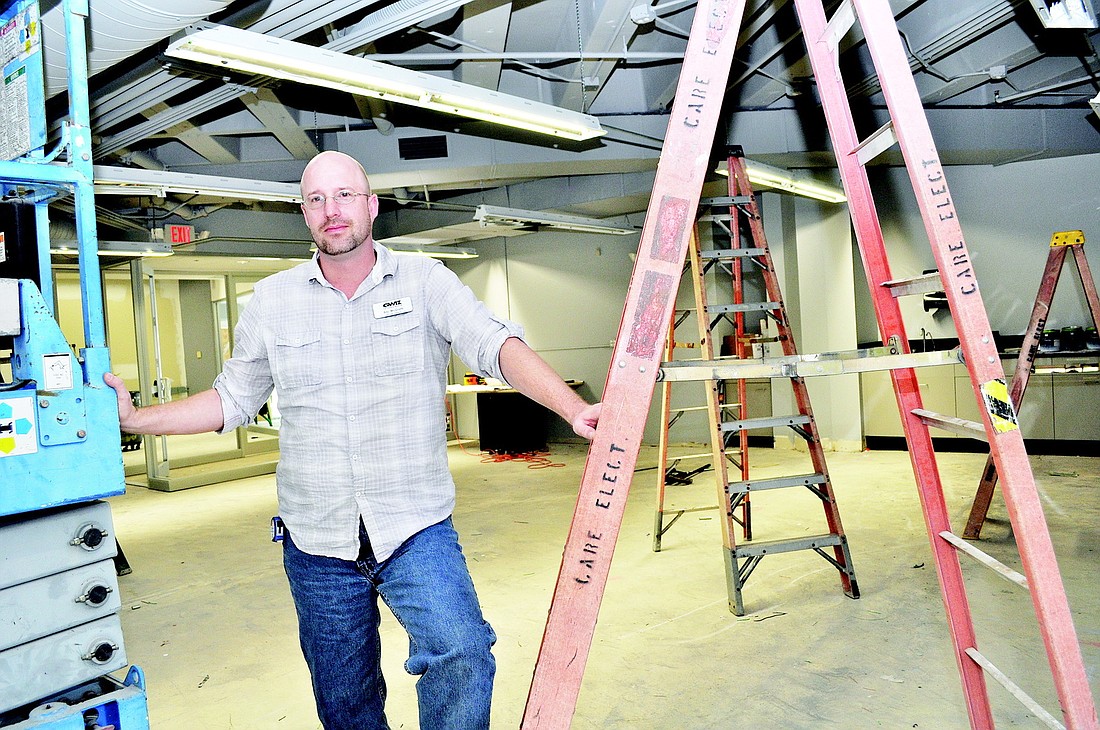- April 16, 2024
-
-
Loading

Loading

Eric McGrath is tucked away inside a quiet classroom at G.WIZ Science Museum.
Away from the clamor of parents and kids, McGrath, a 37-year-old soft-spoken machinist, is bent over a laser etcher, which he’s calibrating for tomorrow’s Fab Lab training session.
“There’s a little laser in here that’s controlled by bars and servo motors,” McGrath says. “Basically, it can etch plaques, trophies, dog tags, wood … ”
As he begins to rattle off the machine’s capabilities, he reaches for a large workbook and flips open to a page illustrating how to make three-dimensional dinosaurs.
“You can piece together 2-D objects,” McGrath says. “You see here? They look like puzzles.”
The machine is just one of several high-tech acquisitions that will go into G.WIZ’s new Fab Lab when it opens in April.
Short for “fabrication laboratory,” the G.WIZ program, which was born at the Massachusetts Institute of Technology, was made possible last fall through a $400,000 donation, courtesy of the Faulhaber Foundation, whose Sarasota benefactors — Dr. Fritz and Ping Faulhaber — are innovators in the field of miniature electric motors and micro-drive systems.
Since MIT developed the concept, more than 50 fabrication laboratories have popped up in science museums, schools and colleges all over the world.
According to McGrath, the G.WIZ Fab Lab is the first of its kind in the Southeastern United States.
A Bradenton resident and an adjunct IT instructor at Keiser University, McGrath was hired in September to oversee the lab.
His official title is Fab Lab foreman.
When the lab opens to the public this spring, McGrath will be on hand to teach users how to operate the
machinery. The space will be open to anyone with a design idea — students, teachers, business owners and retirees.
“It’s not meant for any one age group,” McGrath says. “An idea is ageless.”
For a small fee, Fab Lab innovators will be able to fabricate a variety of projects using either their own materials or goods purchased at G.WIZ, such as acrylic, wood, glass, metal or plastic.
For McGrath, it’s the ultimate artistic fabrication-meets-education job.
“My father says my creativity and technology skills have converged,” McGrath says. “I can’t think of another place I’d rather be.”
The son of an artist, McGrath grew up in Western New York, where he studied CNC programming at a trade school in the mid-1990s. The skill taught him craftsmanship, engineering and the basics of robotics.
These interests, however, always stemmed from a creative impulse.
When McGrath was 10, he created a series of stop-animation videos using his father’s Sony Betamax video camera.
“Later on, CADKEY became my canvas,” McGrath laughs.
CADKEY, a software program, is to machinists what Photoshop is to graphic designers.
When McGrath moved to Florida 13 years ago, he worked for a few small machine shops before going back to school to get a degree in computer networking from Keiser University.
Seven years ago, he began developing online virtual tours for local real-estate companies, a venture that prompted him to build a 30-foot tripod out of PVC pipe, which he now uses to take elevated pictures of houses.
The apparatus, which collapses down to 6 feet so it can fit into a car, has a live video feed running to a small black-and-white monitor.
Using the video to guide his camera, McGrath triggers his shutter from the ground via remote control, which captures the same photo as a photographer using more expensive equipment.
“It doesn’t matter what career you’re in,” he says. “If you have a good background in creativity and technology, you’ll always have the upper hand.”
He says he built the tripod in his own garage “fab lab” in an effort to further his photography business. To his delight, the plan worked.
Using money netted from additional photo gigs, McGrath quickly paid off the machines he purchased to fabricate the device.
“Funny how that works,” he says quietly.
Without even realizing it, McGrath has demonstrated the importance of his day job.
DID YOU KNOW?
When contractors began work on G.WIZ’s Fab Lab, they uncovered wooden rafters that were once a part of the former Selby Library. For aesthetic purposes, the museum decided to install track lighting and keep the rafters exposed.
The Fab Lab will have a sewing machine to make textile designs. Eric McGrath does not know how to sew — yet.
There are MIT-affiliated Fab Labs in Afghanistan, Ghana, Iceland and Kenya, to name a few.
Contact Heidi Kurpiela at [email protected]